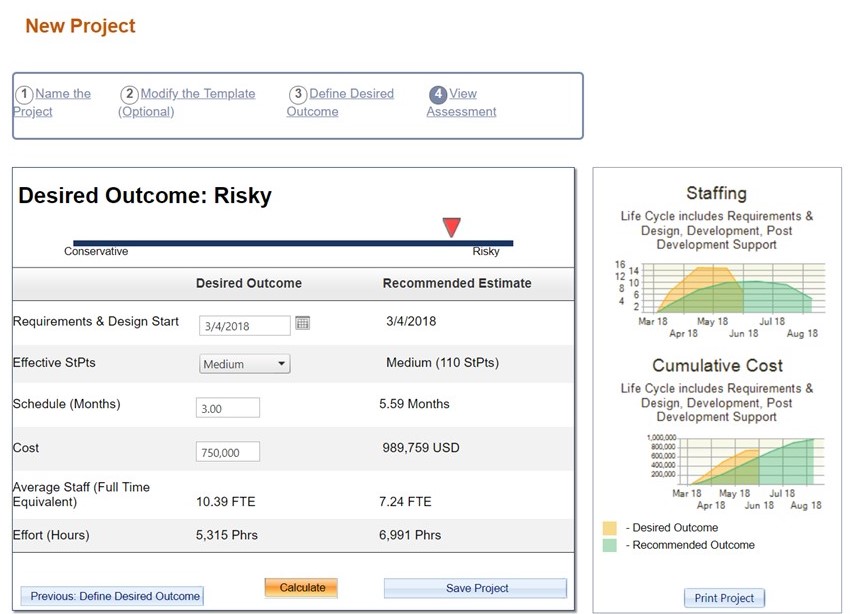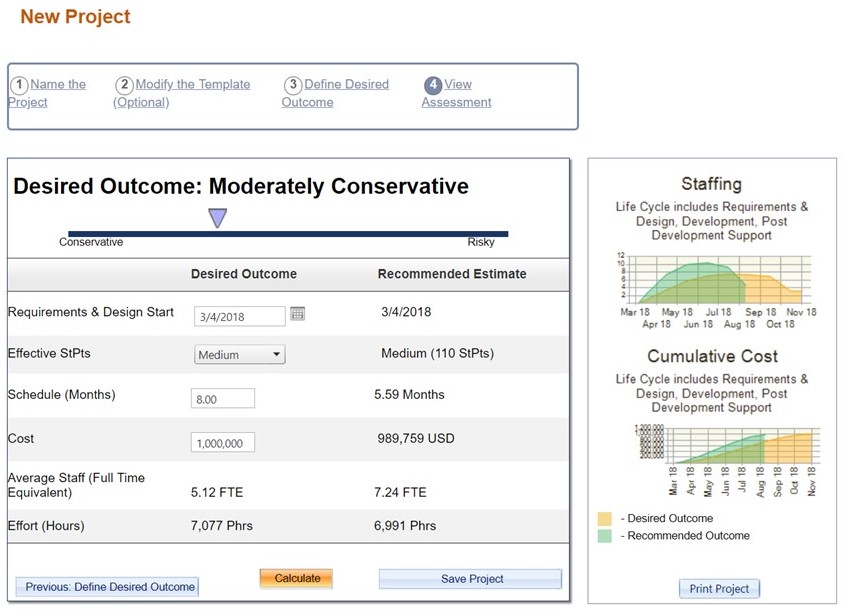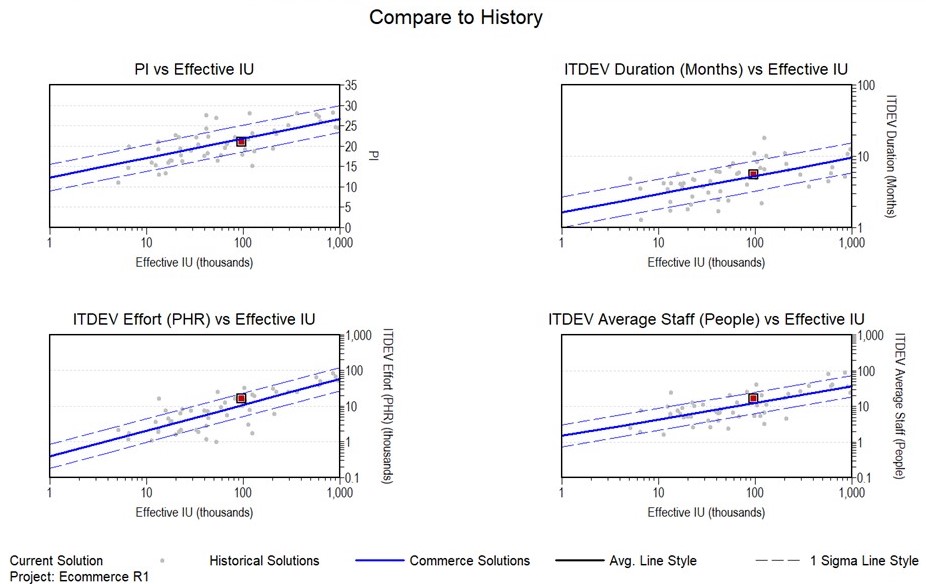It happens time and time again. Clients look to their vendors to provide software development or configuration services and both sides are often left with big questions. Is the price fair? Can we really get the project done within our duration and resource goals? How can we negotiate for a successful outcome?
There are estimation solutions available that can help. The good ones will leverage empirically-based models, historical data, and industry analytics to uncover which proposals are feasible and which ones are risky.
In the first view below, there are two columns: the “Desired Outcome,” which is one vendor’s proposal and the second column, which is the data-driven “Recommended Estimate.” The vendor is promising to complete the work in 3 months with a $750,000 price tag. You can see that this proposal is “Risky” and that the vendor will probably finish late and will either have to ask for more money or lose money in the long run. The charts in the view provide a graphical representation.

In the second view for the same project, you see a second vendor’s proposal compared to the “Recommended Estimate.” The vendor’s bid is for 8 months with a $1,000,000 price tag and there is a “Moderately Conservative” rating. In other words, this vendor has a much better chance of achieving what they are promising.

Once the client has compared vendor proposals they can make a data driven decision regarding which vendor to choose and both sides can use the “Recommended Estimate” to negotiate a feasible outcome. The vendor could also use this type of analysis before they submit their proposal to make sure their numbers are competitive.
Additional analytics can also be reviewed for more insight. The view below includes analytics from a vendor proposal for a different project. The top left chart shows how the vendor’s estimated productivity (PI) compares with the productivity that they have achieved on past projects, and how it compares to the industry trend. The additional charts show similar comparisons for effort, duration, and staffing. On the effort chart you can see that making the right proposal decision could potentially save hundreds of thousands of dollars on larger size projects.

The power of analytics and empirically-based estimation used together can improve decision-making and communication between the vendor and the client. Proposal risk can be seen early in the decision-making process and the data can be used to negotiate a fair price and an achievable duration.
